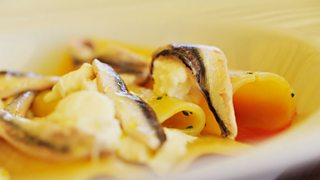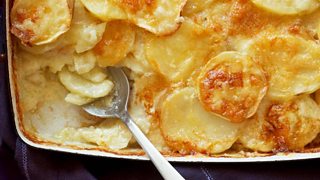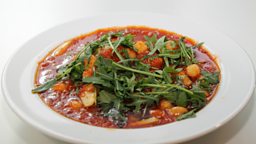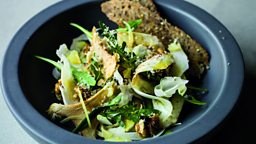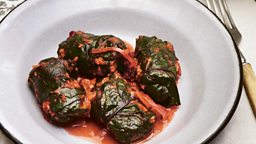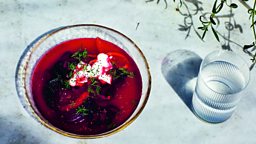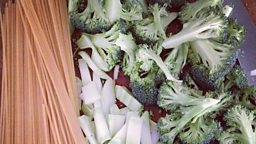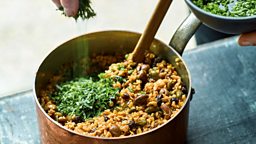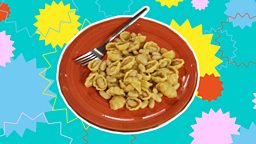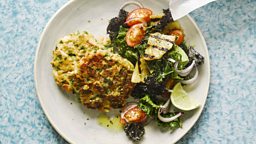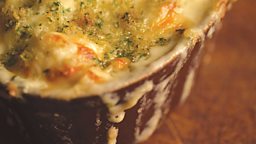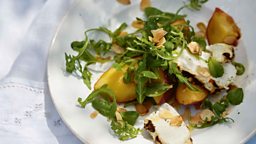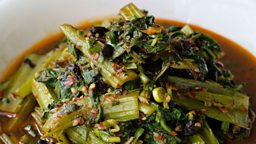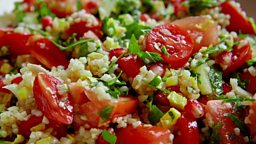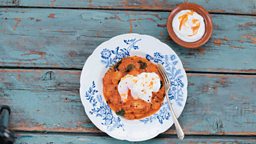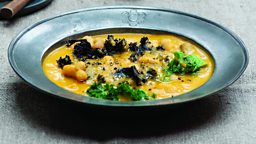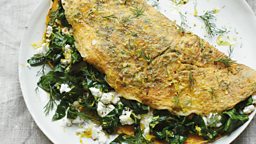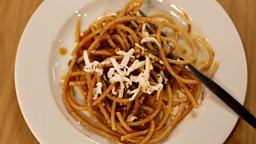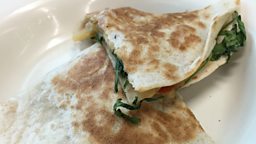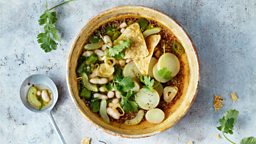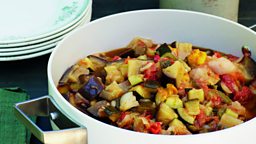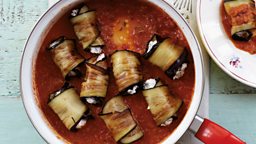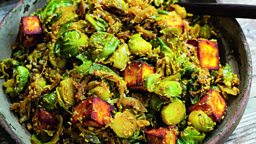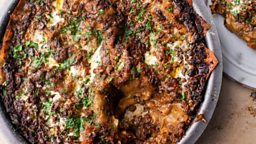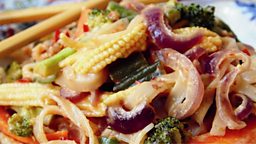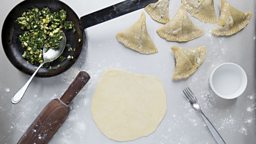Pasta alla Puttanesca
Tomato: Pasta alla Pomarola Makes about 1.8 litres sauce;
pasta recipe serves 4
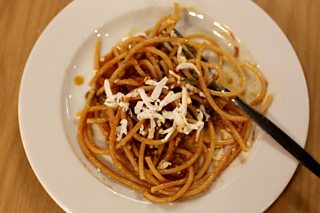
Ever since that sauce-making competition at Chez Panisse, I’ve learned dozens and dozens of di.erent methods for making basic tomato sauce, but the truth of the matter is that all of the variations—using onion or not, adding basil or oregano, puréeing or milling—o.er little more than personal flourish. You can do it however you like; most important is to use the best-tasting tomatoes and olive oil you can find, and to get the salt right. Do that, and you’ve got yourself a.wonderful blank slate, ready to use in pasta and pizza, of course, but also in dishes as diverse as shakshuka, braised Moroccan lamb, Mexican rice, or Provençal fish stew.
Extra-virgin olive oil
2.medium onions, sliced thinly
Salt
4.garlic cloves
1.8kg fresh, ripe tomatoes, stemmed, or four (400g) cans whole
San Marzano or Roma tomatoes in their juice
16.fresh basil leaves or 1.tablespoon dried oregano
350g spaghetti, bucatini, penne, or rigatoni
Parmesan, pecorino Romano, or ricotta salata for serving
Set a.large, heavy-bottomed, nonreactive pot over medium-high heat. When the pot is hot, add just enough olive oil to coat the bottom. When the oil shimmers, add the onions. Season with salt and reduce the heat to medium, stirring from time to time to prevent burning. Cook until the onions are soft and translucent, or blond, about 15.minutes. A.little browning is fine, but don’t let the onions burn. If the onions begin to brown too quickly, turn down the heat and add a.splash of water. While the onions cook, slice the garlic, then quarter the tomatoes, if using fresh. If using canned, pour them into a.large, deep bowl and crush with your hands. Swirl about 50ml of water in one can, then pour it into the second can and swirl, then add into the tomatoes. Set aside.
Once the onions are soft, push them to the outer edges of the pot and add a.spoonful of oil into the centre. Add the garlic to the oil. Gently sizzle the garlic until it starts to give o. an aroma, about 20.seconds, and before it begins to brown, add the tomatoes. If using fresh tomatoes, use a.wooden spoon to smash them a.bit and encourage the juice to come out. Bring the sauce to a.boil, then reduce to a.simmer. Season with salt and tear in basil leaves or add oregano, if using.
Cook over low heat, stirring the sauce often with a.wooden spoon. Scrape the bottom of the pot to ensure that nothing sticks. If the sauce does start to stick and scorch, then do just the opposite. Don’t stir! That’ll just mix the burnt taste into the rest of the una.ected sauce. Instead, immediately transfer the sauce to a.new pot without scraping the bottom, and leave the scorched pot to soak in the sink. Take extra care to prevent the new pot from burning again.
Put a.large pot of water on to boil over high heat. Cover with a.lid to prevent too much evaporation.
The sauce will be done when its flavour shifts from raw to cooked, about 25.minutes. Dipping your spoon into the sauce, you’ll be reminded less of the garden or the farmer’s market and more of a.comforting bowl of pasta. If you’re using canned tomatoes, the shift is subtler: wait for the moment when the tomatoes lose their tinny taste from the can, which can take closer to 40.minutes. When the tomatoes are cooked, bring the sauce to a.rapid simmer and stir in 175ml of olive oil. Let it simmer together for a.couple of minutes; the pomarola will transform into a.rich sauce as it emulsifies. Remove it from the heat. Purée the sauce with a.stick blender, blender, or food mill, then taste and adjust seasoning. Keep covered in the refrigerator for up to a.week, or freeze for up to 3.months. For storing pomarola, process jars filled with sauce in a.water bath for 20.minutes, and use within.a.year.
To serve 4.people, season the pot of water with salt until it tastes like the summer sea. Add the pasta, give it a.stir, and cook until it’s just al dente. While the pasta cooks, bring 450ml of pomarola sauce to a.simmer in a.large sauté pan. Drain the pasta, reserving 225ml of pasta water. Add the pasta to the sauce and toss, thinning as needed with pasta water and olive oil. Taste and adjust salt as needed. Serve immediately, with Parmesan, pecorino Romano, or ricotta salata.cheese.
Variations
To add some creaminess to the pasta, add 125ml crème fraîche (page.113) to 450ml pomarola sauce and bring to a.simmer just before adding cooked pasta, or add 115g of fresh ricotta cheese in large dollops into the pasta after tossing with tomato sauce.
To make Pasta alla Puttanesca, set a.large frying pan over medium heat and add enough olive oil to coat the bottom of the pan. When the oil shimmers, add 2.cloves minced garlic and 10.minced anchovy fillets and cook gently until the garlic starts to give o. an aroma, about 20.seconds. Before the garlic begins to take on any colour, add 450ml pomarola sauce, 55g rinsed and pitted and black olives (preferably oilcured), and 1.tablespoon rinsed salt-packed capers. Season to taste with red pepper flakes and salt and simmer for 10.minutes, stirring occasionally. In the meantime, cook 350g of spaghetti until al dente and drain, reserving 225ml of the pasta cooking water. Toss the pasta with the simmering sauce and thin as needed with pasta water. Taste and adjust salt as needed. Garnish with chopped parsley and serve immediately.
To make Pasta all’Amatriciana, set a.large frying pan over medium heat and add enough olive oil to coat the bottom of the pan. When the oil shimmers, add 1.finely diced onion and a.generous pinch of salt. Stirring occasionally, cook until the onion is soft and brown, about 15.minutes. Slice 175g guanciale (cured pork jowl), pancetta, or bacon into matchsticks and add to the onion. Cook over medium heat until the meat is barely crisp, then add 2.cloves minced garlic and cook gently until the garlic starts to give o. an aroma, about 20.seconds. Before the garlic begins to take on any colour, add 450ml pomarola sauce and season to taste with salt and crushed red pepper flakes. Simmer for about 10.minutes. In the meantime, cook 350g of spaghetti or bucatini until al dente and drain, reserving 225ml of the pasta cooking water. Toss the pasta with the simmering sauce and thin as needed with pasta water. Taste and adjust salt as needed. Garnish with abundant grated pecorino Romano or Parmesan and serve immediately.
Samin Nosrat is a food writer, cook and teacher and author of Salt, Fat, Acid, Heat (Canongate, 2017)
More Food on the 成人快手
-
![]()
Browse our selection of recipes from top chefs, cooks and food writers who have joined us on Woman's Hour...
-
![]()
Download this interview, or subscribe to the Cook the Perfect...downloads
-
![]()
Browse over 13,000 recipes on the 成人快手 Food website
